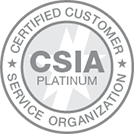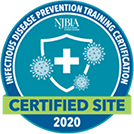The below blog was contributed by Ron Sidman, an advisor and mentor to members of the Juvenile Products Manufacturers Association (JPMA).
Having the courage to be specific about what you want to accomplish and in what period of time is a highly underrated characteristic of high performing companies, associations and people. Too often leaders and managers think it’s safer to be vague and noncommittal.
At some level, we all are reluctant to set targets for future results. After all, it’s impossible to accurately predict the future, no one wants to fall short of expectations, and some things are difficult to measure. However, the very act of setting targets can enable us to accomplish more than we ever thought possible. It can have almost a magical positive effect on our behavior and results.
The Benefits of Objective Setting
Without specific, reasonable but aggressive, measurable objectives, we tend to slip into a generalized “best efforts” mentality. It would be like going bowling without keeping score. At the end of the game, you’d have little sense of whether you did well or not—whether you’re getting better or getting worse. In business, there would be a tendency to just react to immediate events with performance that gradually drifts backwards over time. Think about trying to maintain a healthy weight as an example. What would happen to most of us if we never stepped on a scale or didn’t have a healthy weight level in mind? On the other hand, watch what happens when you really commit to losing 10 pounds over the next three months and weigh yourself regularly. You are forced to understand why you’re overweight and exactly what you need to do day by day to accomplish your objective. Plus you have something to celebrate if you succeed.
Objective setting in associations also plays another critical role. It aligns the efforts of everyone in the organization, both staff and volunteers. Without common clear objectives, people tend to focus on their own personal interests. On the other hand, defined objectives can be trickled down level by level so that everyone is moving in the same direction with the same intensity.
The Importance of Organizational Culture
The key to making it work lies in your organization’s culture. Let’s compare two associations. Association A is an organization where mistakes or failures usually lead to negative personal consequences. Employees and board members tell newcomers about so and so who was fired or ostracized for promoting a new program that didn’t pan out. Non-conforming job applicants or board candidates are rejected as too weird. Critics of the status quo and both the board and staff levels quickly find themselves being penalized or ushered to the door. Little financial information is shared with the workforce in an effort to avoid poor morale in bad times or requests for raises in good times. Challenging tasks are avoided in favor of easy projects where success is ensured.
Organization B on the other hand believes that the more employees, chapter leads and committee members know about current reality, the more aligned they will be in the pursuit of association goals. Problems are accepted as being inevitable. Uncovering problems and weaknesses is encouraged and rewarded as the way for the organization to keep improving. When things go wrong, managers first look to the process as the reason rather than the people. Board members and job applicants are rated based on character and what results they’ll be able to produce rather than how they appear or what they appear to know. Trying new things and failing is looked at as a necessary part of learning. Good failures are celebrated and rewarded.
I don’t have to tell you which organization is more likely to successfully embrace objective setting and in turn is more likely to improve and grow. It’s also a given which association is more likely to be able to retain their best employees and recruit their most engaged and innovative board members. Organizational culture is created by the company’s leaders by what they do (not so much by what they say should be done). You get what you reward and what you tolerate. You’ll stop getting what you punish. Very simple! An organization’s culture is one of the most powerful determinants of its performance. So design it consciously and wisely and then maintain it.
Objective Setting Systems
There many options available for implementing objective setting in your organization but one of the best I’ve seen is the one used by Intel, Google, LinkedIn, and many other companies. It’s called Objectives and Key Results or OKRs. It’s both very easy to implement and very effective. The objectives are descriptions of expected accomplishments within a specific time frame (for example, “Improve our customer service”) and for each objective you set numerical targets called key results (for example, “Minimum 9.0 customer survey rating”). You start by setting company-wide 3 year OKRs which are then broken down and rolled out to every department and every employee to the extent that you ultimately end up with current quarter OKRs for each individual. Here’s a link to a video that explains the concept in detail very well.
https://www.youtube.com/watch?v=mJB83EZtAjc
Next Steps
If you don’t already have an effective objective setting process in place, watch the video and see what you think. Take the plunge and start getting in the habit of setting some ambitious objectives. You’ll be surprised by how much more you’ll accomplish. And if you don’t meet some of your objectives, the process of reviewing what didn’t go as planned is how you learn and improve.




